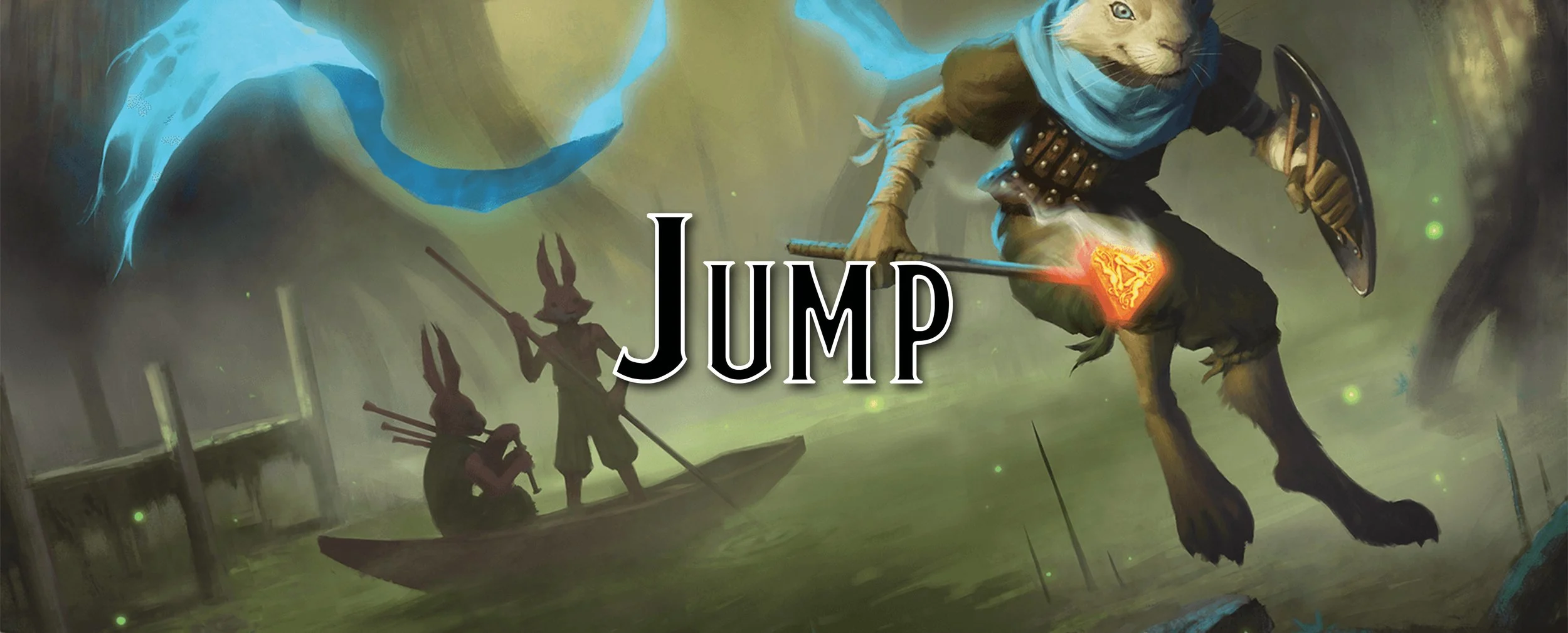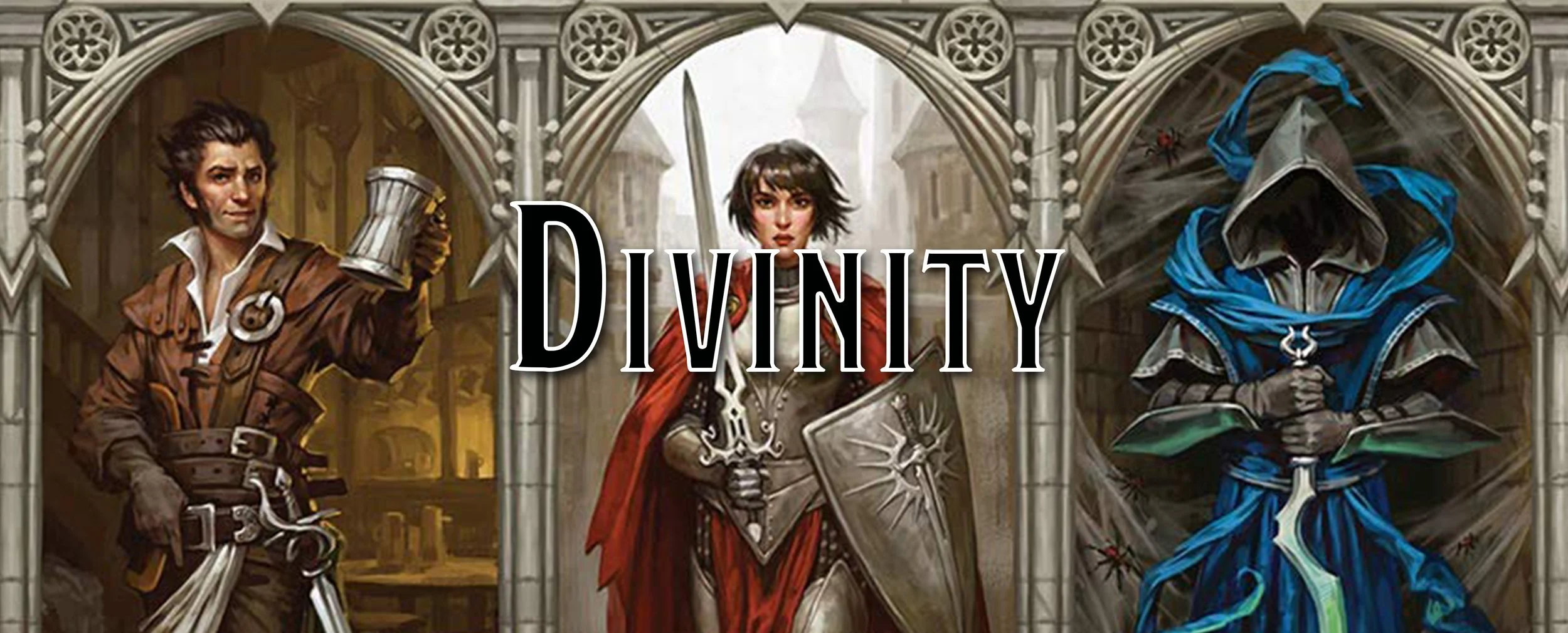How Far Can You Jump In 5e - When Rules Become Obstacles
It’s a simple question. How far can you jump in Dungeons & Dragons? The answer is easy… until it isn’t.
Long Jump & High Jump
We first need to decide are we doing a Long Jump or a High Jump. If we’re going for distance (we’re going for speed—sorry had to) then we are looking at Long Jumping which means we can jump up to our Strength score. If, instead, we want height, we are looking to High Jump, which is up to 3 plus our Strength modifier.
Of course, it isn’t that simple. I’m not writing an entire article on jumping if we could solve it in a single paragraph. And really, this article isn’t even about jumping.
Long Jump
When you Long Jump, you also need to move 10 feet and you get to jump up to your movement or your Strength score, whichever comes first. If you don’t move first, you can jump up to your movement or half your Strength score, whichever comes first.
High Jump
For High Jumping, you need to also move 10 feet before you get to jump up to 3 plus your Strength modifier, and if you don’t, it is half that height. But that isn’t the whole truth, as the Game Master can allow you to jump higher than normal by making a Strength (Athletics) check, but the DC is up to the GM and there are no guidelines for what a suitable number might be.
Jump! Jump! Jump!
But we still haven’t solved the full ruling here on jumping. For every foot you jump, it costs you a foot in movement. So if you had a Strength score of 20 and you wanted to Long Jump that full amount, you’d first have to move 10 feet and then jump, spending 20 feet of your remaining movement for the 20 feet you are Long Jumping.
That is, if you have a full movement speed of 30 feet. Some people, like dwarves, only have 25 feet, so the max they can Long Jump is 15 feet, 10 feet goes to running and the last 15 feet go into jumping. It doesn’t matter if their Strength score is 20, they have short legs, they can only jump so far.
Or maybe not. Let’s say that, as a Game Master who can’t help but give, you allow them to take the Dash action on their turn. Now they can jump their full Strength score and they jump 20 feet, land, and have 20 feet left over that they can move. That’s 10 feet for the run up to the Long Jump, 20 feet for the Long Jump, and then 20 feet left over, perhaps they wish to move 10 feet again, and then Long Jump, though they could only jump for 10 feet on that second bounce before they hit the ground.
But we can’t stop there. Jumping only gets more complicated.
The Jump Spell
The jump spell is pretty straightforward and is only two sentences with no fluff. Should be easy to figure out what it does.
You touch a creature. The creature's jump distance is tripled until the spell ends.
So let’s say that you cast jump on a creature and you tell it to jump. It does so. How far does it jump?
Well, I suppose we could look at the wording of the spell. It says you triple the jump distance of a creature. Pretty straightforward, if you have a Strength score of 15 and move 10 feet on your turn, you should be able to jump up to 45 feet away.
Except we get to the small problem that your speed is only 30 feet, so now you have to Dash to go the full 55 feet distance (if your Game Master even allows you to use Dash to extend the length of your Long Jump). But lets say they are cool with you being good at jumping, but then, what happens if you have a Strength score of 20 feet?
You run 10 feet, and then fling yourself forward. You should be able to do 60 feet with the jump spell, no problem. Except you don’t. You only jump 50 feet and plummet into the chasm you were attempting to Long Jump over. That’s because, even though you dashed on your turn, you were only able to Dash once, and you had to spend 10 feet of your movement to get that running start, meaning you only had 50 feet of movement left on your turn.
Or does it? Some might argue that that makes the spell completely useless, and that the real use of the jump spell is that it also triples how far you can jump with your movement, effectively, every foot you jump only costs you a third of a foot in movement. This does come with the small, humorous thought that you should be bunny hopping if someone casts the jump spell on you to maximize how far you can jump.
We already covered that if you don’t move first on your turn, your jump distance is halved. If we have a Strength score of 15 feet, our Long Jump would be halved to 7 feet. BUT, if we have the jump spell, that is instead 21 feet of Long Jump distance (or is it actually 22.5 feet of distance because you triple 15 feet to 45 feet, and then halve for not running?). If we go with the interpretation that every foot of jump only costs us a third of a foot, you could then hop 20 feet forward (or 21 or 22.5 feet, but let’s stick to a grid here), and it would only cost you 6.67 feet of movement, we’ll call it 7 feet so we don’t confuse anyone (or maybe 5 feet because of that annoying grid?).
If you hop for your entire movement, you can now hop four times for 80 feet, and have two feet left that you get to walk forward (alright, it’s actually 84 feet or 90 feet depending on your order of operations). Which, is either triple your movement or just there about, all with the help of a first level spell.
Why Are You Pointing At Those Boots?
But wait! We aren’t done yet. We have a pair of boots we need to slip on called the boots of striding and springing.
In addition, you can jump three times the normal distance, though you can't jump farther than your remaining movement would allow.
This magic item specifically states that you can jump three times your normal distance, see the jump spell above, but then clarifies that you can NOT jump farther than your remaining movement. So it kind of works like the jump spell, but not at all. It triples your Long Jump and High Jump ability, but now you are still restrained by your original movement speed. Just because you have a 20 Strength score, doesn’t mean you are jumping 60 feet on your turn if you don’t have the remaining movement for it.
Which seems more inline with what the jump spell should’ve said and probably intended, but the spell doesn’t, so we just made a difficult ruling even more complicated and prone to bickering. Also, what happens if you wear these boots and also get the spell cast on you? Best not to think about it or how you might be able to jump 180 feet in a single bound.
Leaping to a Point
Jumping is complicated, the rules are confusing, pedantic nerds everywhere can spend hours online arguing about it on forums, each ignoring what the other has to say, calling each other pedantic, and claiming that the spell does what the spell says it does, but then ignoring what the spell does and picking apart every single word in the spell, and then coming up with a completely off base assumption of what the spell does that bears no recognition of the spell or have basis in fact.
These books and rules were written by a group of people, each with their own style of writing, their own ideas of what makes sense, and their own interpretation. Whoever wrote the jump spell thought it made perfect sense, otherwise they would’ve clarified it. Whoever wrote the boots of striding and springing may have saw the jump spell, and decided that they should be the one who clarifies what the jump spell should’ve said or will say in a future errata that never got released.
And the 5th edition of Dungeons & Dragons hasn’t done itself any favors in this regard. It is a system written on a loose but precise wording. It choose to be informal in its writing, to make it easier to read, but then falls back on precise language, like the debate between a melee weapon attack and an attack with a melee weapon.
This pedantic laissez faire is exhausting. Which is the point of this post. You can spend way too long circling, trying to be as close to the rules as possible, and still end up being wrong, interpreting it wrong, or just being exhausted by the end result.
When you run your games or when you are a player, don’t do this to yourself. Enjoy the game. Sit around the table, have fun telling a neat story, and try to understand that the pedantic nerd who is arguing with you about how far you can jump is also just trying to have fun. Unfortunately, they have just got stuck in an endless loop of trying to solve a rule system that is both brittle and flexible. It is capable of crafting fascinating stories, all the while you pound your head into a wall trying to understand even the basic rules of it.
Perhaps the next edition won’t have confusing rules on jumping, but I’m sure there’ll be something in there that will cause wars spanning internet forums as people try to understand precise rules with imprecise words.
Like what we are doing here?
Support us on Patreon!
You’ll get early access to deep dives, our Homebrew Hoard,
monster stat blocks and more!
Follow us on Reddit to keep up to date on everything we talk about!



